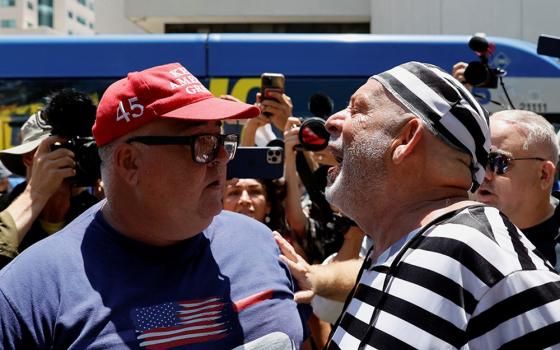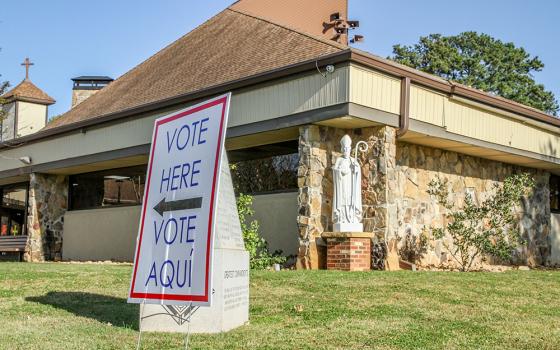Only in the Catholic church is a kiss never just a kiss.
The Congregation for Divine Worship has decided that the kiss of peace should stay where it is in the Mass, but it should be performed with greater sobriety, according to Vatican Insider and Catholic News Service. Be prepared for the following instructions from your parish priest: "Let us offer each other the sign of peace, but don't smile."
The decision comes in a June 7 letter from the congregation's prefect, Spanish Cardinal Antonio Cañizares Llovera, which is co-signed by Archbishop Arthur Roche, the congregation's secretary, and approved by Pope Francis.
The cardinal notes that during the 2005 Synod of Bishops on the Eucharist, the question of moving the kiss of peace arose. Many bishops complained that the kiss in its current location disrupts the congregation when it should be preparing for Communion.
The letter shows why liturgical scholars have been praying for a new prefect for the congregation. The decision ignores the fact that the most ancient liturgical text (the first Apology of Saint Justin in the mid-second century) has the kiss of peace occurring at the end of the Liturgy of the Word.
As I explained in an article in America (April 15, 1995):
Justin describes the Liturgy of the Word as including readings from the memoirs of the Apostles or the writings of the prophets. Instructions and exhortations from the presider follow the readings and then all rise together and pray. He also notes: "Having ended the prayer, we salute one another with a kiss." Then the gifts are brought forward. Thus the kiss occurred immediately after the prayers that concluded the Liturgy of the Word. Today this would mean placing the kiss of peace after the prayer of the faithful. ...
Kissing at the conclusion of prayers appears to have been a common Christian custom. It could have been as spontaneous as the actions of a family today, hugging and kissing each other after saying the rosary together. Another early Christian writer, Tertullian (d. 230), asks, "What prayer is complete without the holy kiss?" He saw the kiss as a seal of the prayer that preceded it. Like the Amen, it represents assent to what has gone before.
The kiss at the end of the Liturgy of the Word symbolizes the community acceptance of the message they have just heard. They are "shaking on a deal." They are agreeing to a covenant. Liturgical historians believe that the kiss moved to its current location when the Lord's Prayer was moved from the end of the prayer of the faithful to its current location prior to Communion.
Some have incorrectly seen the kiss not as a conclusion of the Liturgy of the Word but as a preparation for the Eucharistic sacrifice, citing Matthew: "If you bring your gift to the altar and there recall that your brother or sister has anything against you, leave your gift at the altar, go first to be reconciled with your brother or sister, and then come and offer your gift" (5:23-24).
This, of course, is the problem with a symbol; its meaning is not always self-evident. The community reads into the symbol whatever meaning it wants. The Catholic community, no matter what the Vatican may want, has made the kiss of peace in its current place a joyous symbol, and no amount of catechesis will change that. It would have been much better if the option of having the kiss at the end of the Liturgy of the Word had been permitted.
For more on the kiss of peace, see my article in America (April 15, 1995), which is pretty good, if I do say so myself.
[Jesuit Fr. Thomas Reese is a senior analyst for NCR and author of Inside the Vatican: The Politics and Organization of the Catholic Church. His email address is treesesj@ncronline.org. Follow him on Twitter: @ThomasReeseSJ.]
Editor's note: We can send you an email alert every time Thomas Reese's column, Faith and Justice, is posted. Go to this page and follow directions: Email alert sign-up.




